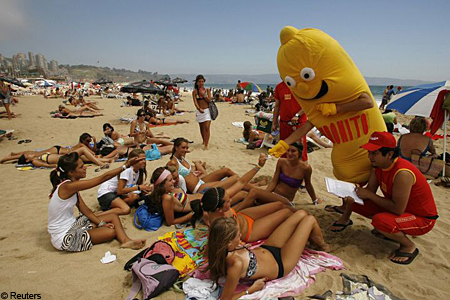You are using an out of date browser. It may not display this or other websites correctly.
You should upgrade or use an alternative browser.
You should upgrade or use an alternative browser.
Absurdism corner
- Thread starter Bosbeetle
- Start date
Phlyra
FLOSSing
- Joined
- Jul 25, 2019
- Messages
- 1,517

Man living in flat for two years only just finds he has a dishwasher
This is a PSA to check all cupboards, drawers, windows, or doors in your home.
Djoga'Ro
moonstruck
- Joined
- Apr 3, 2016
- Messages
- 2,625
That's counterintuitive. Though I haven't concerned myself with formal grammar in too long to remember what makes the difference between what php does here and what one (at least I) would expect.Ok, here is a good one for programmers: Guess what it does print?
PHP:<!DOCTYPE html> <html> <body> <?php $arg = 'YES'; $vehicle = ( ( $arg =='YES')? 'train' : ( $arg =='NO' )? 'car' : ( $arg =='NO' )? 'horse' : 'feet' ); echo $vehicle; ?> </body> </html>
Try it out yourself with an online PHP program:

W3Schools online PHP editor
The W3Schools online code editor allows you to edit code and view the result in your browserwww.w3schools.com
Does someone care to elaborate? Is it the same here as with the dangling else?
levi
Still fresh, damnit!
I think it's because the ternary operator takes two arguments, the first is the negative case, while the postitive case in most cases is the ternary operator on the next line.
To put the qualifying path in pseudocode then:
if "YES" then if not "NO" then if not "NO", horse
To put the qualifying path in pseudocode then:
if "YES" then if not "NO" then if not "NO", horse
Null
Snug
That's counterintuitive. Though I haven't concerned myself with formal grammar in too long to remember what makes the difference between what php does here and what one (at least I) would expect.
Does someone care to elaborate? Is it the same here as with the dangling else?
PHP does right-side evaluation first, and it has a weird priority on things, so when that rightmost questionmark looks for it's leftside argument, it is greedy and slurps up all the code up to the = mark, like so:
PHP:
$vehicle = true ? 'A' : false ? 'B' : 'C' ;
PHP:
$vehicle = (true ? 'A' : false ) ? 'B' : 'C' ;So the rule of thumb with PHP is: when in doubt and even when not in doubt; add parenthesis. lot's of them.
extra points for @levi for mentioning the ternary operator, but soory, I could not parse your pseudocode in my mind.
Last edited:
On a lewder note,
These guys talk about "air action" (erection) and s-pen (ass pen) that is an extension that is introduced and you can use your wand and such:
 (note that in order to access the link you need to consent to many things)
(note that in order to access the link you need to consent to many things)
These guys talk about "air action" (erection) and s-pen (ass pen) that is an extension that is introduced and you can use your wand and such:

Air Actions on the Galaxy Note 10: What are they and how do they work?
The Samsung Galaxy Note 10 introduced a new S-Pen feature called Air Actions. The Galaxy Note line has had something like this for a while now, but a new version makes it way better.
www.androidauthority.com
Last edited:
Null
Snug
(note that in order to access the link you need to consent to many things)
I think I'll be fine, I'm using protection.

Djoga'Ro
moonstruck
- Joined
- Apr 3, 2016
- Messages
- 2,625
@levi the ternary operator has three operants. The first is boolean, the second is to be evaluated in case the bool was true, the third in case the bool was false. (My wording might not perfectly align with php terminology/semantics.)
What I mean is, php's parser reads the expression as (I substitute TRUE and FALSE for the comparisons)
( ( TRUE ? 'train' : FALSE ) ? 'car' : FALSE ) ? 'horse' : 'feet'
so what happens is horse because car because train because TRUE.
I would have expected it to read it as
TRUE ? 'train' : ( FALSE ? 'car' : ( FALSE ? 'horse' : 'feet' ) )
so rather train because TRUE.
Which of those readings is to be picked is controlled by how the language's grammar is formulated, but I can't remember how the two alternatives would look in say BNF.
What I mean is, php's parser reads the expression as (I substitute TRUE and FALSE for the comparisons)
( ( TRUE ? 'train' : FALSE ) ? 'car' : FALSE ) ? 'horse' : 'feet'
so what happens is horse because car because train because TRUE.
I would have expected it to read it as
TRUE ? 'train' : ( FALSE ? 'car' : ( FALSE ? 'horse' : 'feet' ) )
so rather train because TRUE.
Which of those readings is to be picked is controlled by how the language's grammar is formulated, but I can't remember how the two alternatives would look in say BNF.
levi
Still fresh, damnit!
Yes, that's why I called the last two operands arguments. The ternary operator has three operands, one condition and two arguments.
I'm not sure BNF would distinguish between the two approaches. The ternary operator would be a type of expression, formulated something like:
TERNARY=conditional? expression: expression
As has been said in this thread before it's more about the order of evaluation, which is not something BNF is concerned with.
I'm not sure BNF would distinguish between the two approaches. The ternary operator would be a type of expression, formulated something like:
TERNARY=conditional? expression: expression
As has been said in this thread before it's more about the order of evaluation, which is not something BNF is concerned with.
Djoga'Ro
moonstruck
- Joined
- Apr 3, 2016
- Messages
- 2,625
Cannot find an explanation of how the grammar directs the associativity - I tried in wikipedia. But here php's ternary operator's left associativity gets blamed on php's grammar, too.
 en.wikipedia.org
en.wikipedia.org
Ternary conditional operator - Wikipedia
Null
Snug
Null
Snug
Null
Snug
Null
Snug
wismerhill
Still Fresh
That's counterintuitive. Though I haven't concerned myself with formal grammar in too long to remember what makes the difference between what php does here and what one (at least I) would expect.
Does someone care to elaborate? Is it the same here as with the dangling else?
This is one of many PHP sadness: http://phpsadness.com/sad/30
Null
Snug
You don't know the sadness you gave me...This is one of many PHP sadness: http://phpsadness.com/sad/30
Null
Snug
Phlyra
FLOSSing
- Joined
- Jul 25, 2019
- Messages
- 1,517
Is that Zuckerberg?
Similar threads
- Replies
- 29
- Views
- 6K








